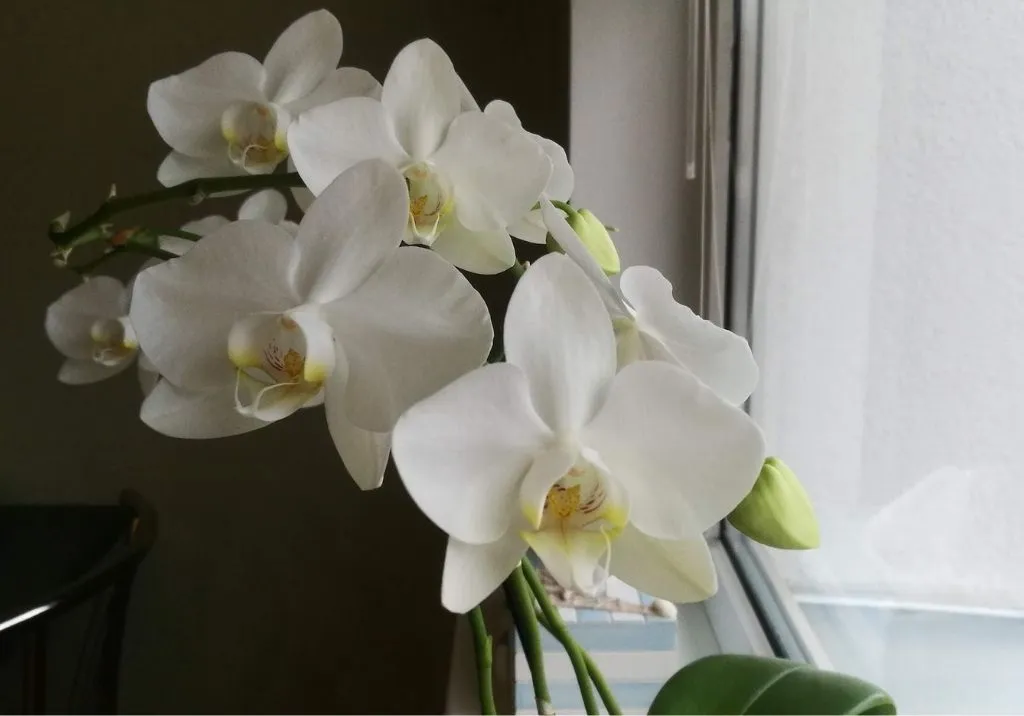Orchids are the quintessential symbol of elegance, beauty, and exotic charm. These stunning plants, belonging to the family Orchidaceae, have captured the hearts of plant enthusiasts worldwide. Despite their sophisticated appearance, caring for orchids is easier than many people assume—provided you understand their unique needs. In this blog post, we’ll provide a comprehensive guide to orchid care that will turn you into a confident orchid caretaker, ensuring your plants bloom year after year.
Understanding Your Orchid
Before diving into the care specifics, it’s important to understand the nature of orchids. Orchids are epiphytes, meaning they naturally grow on trees and absorb moisture and nutrients from the air. They thrive in environments with good air circulation, indirect light, and the right balance of humidity and temperature.
The most common orchid found in homes is the Phalaenopsis orchid (or moth orchid), renowned for its long-lasting blooms and relatively easy care requirements. Other popular species include Dendrobium, Cattleya, and Oncidium orchids, each with distinct characteristics.
Choosing the Right Orchid
When selecting an orchid, look for a healthy plant. Here are some tips for choosing the right one:
- Inspect the Roots: Healthy orchid roots are firm and green or white. Avoid orchids with shriveled or brown roots.
- Check the Leaves: The leaves should be vibrant, firm, and free of spots or blemishes.
- Look for Buds: If possible, choose an orchid with unopened buds. This ensures you’ll enjoy its full bloom period.
Essential Orchid Care Tips
1. Lighting: The Right Balance
Orchids thrive in bright, indirect light. Too much sunlight can scorch their leaves, while too little light can prevent blooming.
- Best Locations: Place your orchid near an east- or south-facing window, where it receives bright, filtered light.
- Signs of Too Much or Too Little Light:
- Leaves that turn yellow or develop brown spots indicate excessive sunlight.
- Dark green leaves (instead of light green) suggest insufficient light.
2. Watering: Mastering the Art
Orchids require less water than most houseplants, but overwatering is a common mistake. To ensure proper hydration:
- Watering Frequency: Typically, water once a week in the warmer months and every 10–14 days in cooler months.
- The Soak-and-Drain Method: Water the plant thoroughly, allowing water to drain completely to prevent root rot.
- When to Water: Check the potting medium; if it feels dry about an inch below the surface, it’s time to water.
- Avoid Overwatering: Never let orchids sit in standing water.
3. Humidity: Emulating Tropical Climates
Orchids thrive in humid environments. Maintaining 50–70% humidity will keep them healthy and happy.
- Humidity Tips:
- Place a tray filled with water and pebbles beneath your orchid pot to increase humidity.
- Use a humidifier in dry climates.
- Grouping orchids together can create a micro-humid environment.
4. Temperature: Keep It Cozy
Orchids prefer consistent temperatures, mimicking their tropical origins.
- Ideal Range: Most orchids thrive in temperatures between 65°F and 75°F (18°C–24°C) during the day and slightly cooler at night.
- Protect from Extremes: Avoid placing orchids near drafty windows, heating vents, or air conditioners.
5. Potting Medium and Repotting
Orchids aren’t grown in soil but in specialized potting mediums like bark, sphagnum moss, or a combination of both.
- Choosing the Medium: Bark is ideal for good drainage and airflow, while moss retains more moisture.
- Repotting: Repot your orchid every 1–2 years, especially if the potting medium has broken down or the plant has outgrown its container.
- Always repot after the blooming cycle ends.
- Use a pot with drainage holes.
6. Fertilizing: Feeding Your Orchid
Regular feeding promotes healthy growth and blooming.
- Frequency: Feed orchids every two weeks with a balanced, water-soluble fertilizer (such as 20-20-20).
- Dilution is Key: Use half-strength fertilizer to avoid over-fertilizing.
- Special Bloom Boosters: Fertilizers high in phosphorus (like 10-30-20) can encourage flowering.
Common Orchid Problems and How to Fix Them
Despite the best care, orchids may encounter challenges. Here are some common issues and solutions:
- Droopy Leaves: Often caused by overwatering. Let the potting medium dry out before watering again.
- No Blooms: Insufficient light or stress may prevent flowering. Relocate your orchid to a brighter spot and ensure consistent care.
- Root Rot: If roots are mushy or discolored, trim the affected roots and repot in fresh medium.
- Pest Problems: Orchids may attract pests like mealybugs or spider mites. Remove them with insecticidal soap or neem oil.
How to Encourage Re-Blooming
Getting your orchid to bloom again is one of the most rewarding aspects of orchid care. Here’s how to stimulate re-blooming:
- Adjust Temperature: Orchids benefit from a drop in nighttime temperature by 10°F (5°C) for a few weeks.
- Prune Spent Blooms: After flowering, cut the flower spike just above a node to encourage new blooms.
- Consistency: Stick to a regular watering and feeding schedule.
Orchid Care Myths: Debunked
- Myth: Ice cubes are a great way to water orchids.
- Truth: Ice cubes can shock orchid roots. It’s better to water thoroughly with lukewarm water.
- Myth: Orchids are too delicate for beginners.
- Truth: With proper care, orchids are hardy and forgiving plants.
Creative Orchid Display Ideas
- Hanging Baskets: Showcase your orchids in hanging planters for a stunning visual impact.
- Terrariums: Create a tropical display by placing mini orchids in a glass terrarium.
- Living Walls: Incorporate orchids into vertical gardens for a modern touch.
To Sum It Up
Caring for an orchid doesn’t have to be daunting. By understanding their needs for light, water, humidity, and temperature, you can create an environment where these exquisite plants thrive. With patience and consistency, your orchid will reward you with vibrant blooms that brighten your home and elevate your space.
Frequently Asked Questions
Q: How long do orchid blooms last?
A: Orchid blooms typically last 4–12 weeks, depending on the species and care.
Q: Can I grow orchids outdoors?
A: Yes, but only in climates that mimic their natural habitat. Outdoor orchids should be sheltered from direct sunlight and extreme weather.
Q: Are orchids pet-safe?
A: Most orchids are non-toxic to pets, but it’s best to keep them out of reach to avoid damage.
By following the tips in this guide, you’ll become a confident orchid grower, enjoying the beauty and grace these plants bring into your life. Happy gardening!



